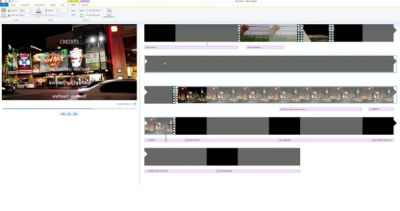
“sMOOC Step by Step” is a free Massive Open Online Course – MOOC is being made available by ECO, which is a European project based on Open Educational Resources (OER), that gives free access to a list of MOOCs in 6 languages, in most languages via Closed Captions (via YouTube subtitles).
This article forms integral part of that course. Our fourth edition has been already launched so you enrol!
Supporting g instructors of massive open online courses -MOOCs- may be just as important to the creation of long-term, successful courses as attracting and supporting students, according to a group of researchers.
g instructors of massive open online courses -MOOCs- may be just as important to the creation of long-term, successful courses as attracting and supporting students, according to a group of researchers.
“Most of the research on how we can make MOOCs successful has focused on the student side – how do we attract and retain them, for instance – but now attention is starting to switch to instructors, who make the MOOCs happen,” said Saijing Zheng, a doctoral candidate in information sciences and technology, Penn State. “So, it’s important to know the motivations of the instructors for teaching in this new format and their experiences and challenges when they teach these MOOCs.”
Zheng said that while MOOC students may need support during certain stages of the course, instructors face several challenges throughout the course development and instruction process, which the researchers broke into three phases: preparation, implementation and feedback.
Instructors reported that teaching a MOOC was different from teaching traditional college courses, adding that some aspects that attracted them to teaching a MOOC were also challenges. For example, the size of a class can be a motivation, as well as a burden, Zheng said.
“It’s a significant motivation for the instructors to reach thousands of students, but, in many cases, they are used to providing one-on-one guidance in a traditional classroom format,” said Zheng. “So a MOOC can be a bit overwhelming to them, if they maintain those expectations.”
Having a global impact on students, professional growth, research opportunities and enhanced name recognition were other reasons they gave for teaching MOOCs, but these also may present new challenges.
Workload during the preparation phase of the course was another concern, according to the instructors.
While most instructors and universities use traditional retention rates to determine the success of the MOOC, online courses attract different types of students and may require different metrics to measure success.
“In previous research we discovered that there are lots of data that show about 90 percent of students in MOOC classes leave the course after two weeks, which is very different from a traditional course,” said Zheng. “This may mean that MOOC students may have different motivations for attending the class — they may just be curious, or attend just so they can get materials to study on their own time.”
Feedback is critical to improving the on line courses and may require the creation of technology to provide feedback to instructors in a timely manner.
“The goal, then, as researchers and designers, is to take this feedback and hopefully provide support for the instructors’ needs,” Zheng said. “By improving support for the instructors and their collaborators, we may also improve the MOOC experience for students and other stakeholders.
If you would like to become the instructor of your own MOOC, after completed “sMOOC Step by Step” please apply to “Become an e-teacher”. We can’t wait to see what you create. – Team UoMan.
Note: Article idea and some texts are taken from:https://www.sciencedaily.com/releases/2016/02/160229182538.htm


